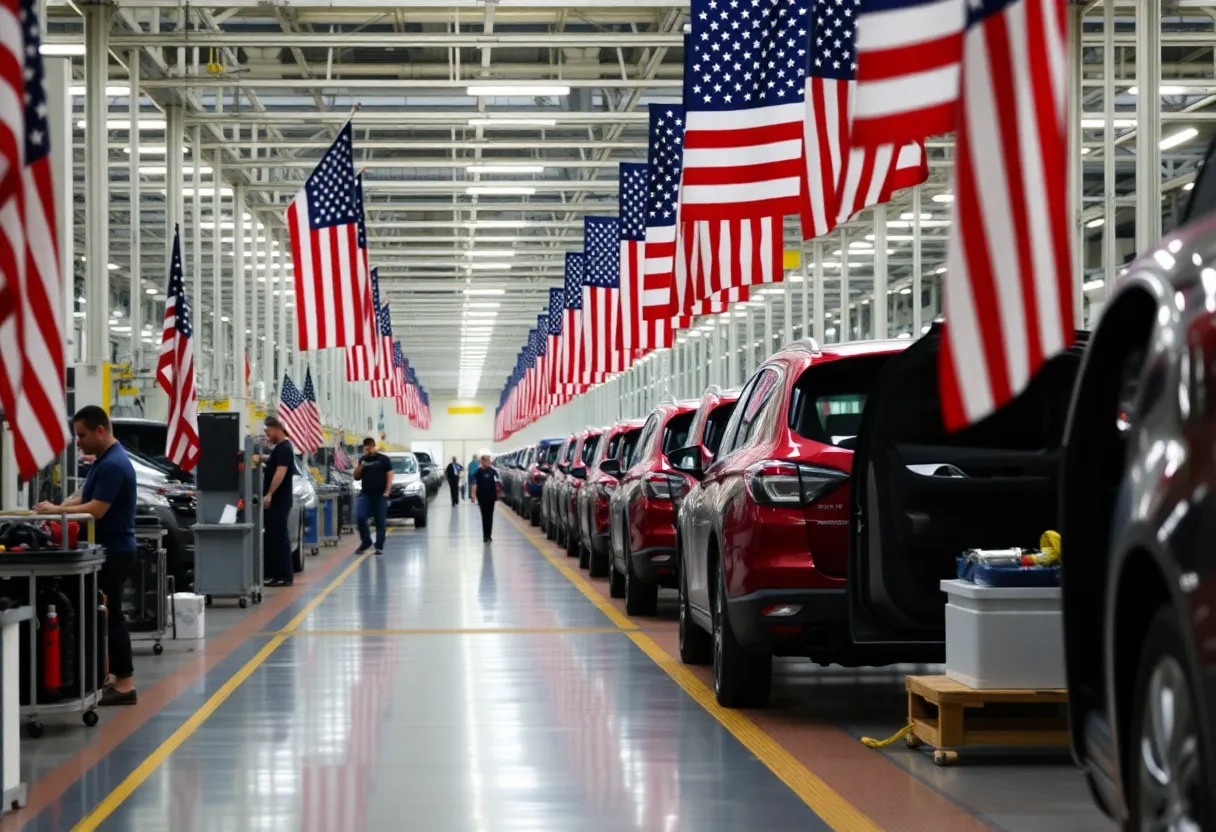

Workers assembling vehicles in an American auto manufacturing facility.
Want to target the right audience? Sponsor our site and choose your specific industry to connect with a relevant audience.
Prominent brand mentions across targeted, industry-focused articles
High-visibility placements that speak directly to an engaged local audience
Guaranteed coverage that maximizes exposure and reinforces your brand presence
Interested in seeing what sponsored content looks like on our platform?
May’s Roofing & Contracting
Forwal Construction
NSC Clips
Real Internet Sales
Suited
Florida4Golf
Click the button below to sponsor our articles:
Sponsor Our ArticlesPresident Trump has announced a 25% tariff on imported autos and auto parts effective April 2, aimed at boosting American manufacturing. While this may help domestic production, it could raise prices for consumers as nearly 45% of vehicles in the U.S. are imported. Mixed reactions emerge from the auto industry, with companies like Tesla potentially gaining an advantage. As the tariffs roll out, the landscape of the auto industry may shift significantly, prompting consumers and manufacturers to adapt to new pricing dynamics.
In a move that’s stirring up quite the conversation, President Trump has announced a hefty 25% tariff on imported autos and auto parts starting on April 2. This decision comes straight from the Oval Office, where an executive order was signed, and it aims to give a boost to American-made vehicles. The idea is that if you make your car right here in the U.S., you won’t face that additional cost, making it a win-win for domestic manufacturers.
So, what does this actually mean for the average consumer? Well, with about 45% of light vehicles sold in the United States being imported, these tariffs are likely to raise the prices of imported cars and parts. The U.S.-Mexico-Canada Agreement (USMCA) will keep certain auto parts tariff-free for the time being, but there’s a catch: tariffs will kick in eventually for non-U.S. content, which means things could get a bit messy down the road.
Many are scratching their heads, wondering how these tariffs will impact car prices. As competition heats up, especially with China’s auto industry, manufacturers are feeling the pinch. The goal is to encourage companies to move production back to the U.S. and create a robust landscape for American jobs. UAW President Shawn Fain has pointed out that this could be a significant step forward for autoworkers, emphasizing the need to revive good union jobs that support families and communities.
On the flip side, not everyone thinks this is a good idea. Canadian business leaders are already voicing their concerns, describing the tariffs as a source of chaos and uncertainty. It seems that the auto industry is in a precarious position, caught in a high-stakes game where international relations and market dynamics are constantly shifting. Major players like Hyundai, Volkswagen, and General Motors may face harsh realities as they deal with these added costs in manufacturing.
Interestingly, there’s one company that stands to gain from this situation: Tesla. With factories located in California and Texas, Tesla is already producing all its vehicles sold in the U.S. Without the burden of tariffs, they’ll likely have a competitive edge over other automakers who are reliant on imports.
This announcement comes as part of a broader strategy from the Trump administration, which includes the introduction of reciprocal tariffs on various imports. As these policies unfold, it’s clear that the auto market is facing a shake-up, making it all the more essential for consumers to stay informed about the prices they might be facing in the coming months.
As April 2 approaches, both consumers and automakers will be keeping a close eye on the situation. Will these tariffs drive prices up and affect vehicle sales? Or will they succeed in revitalizing American manufacturing and creating jobs? Only time will tell, but one thing is certain: the landscape of the auto industry is changing, and it’s going to be interesting to see where it all leads.
In the meantime, folks in the market for a new vehicle might want to consider their options carefully as the effects of these tariffs start to ripple through the industry. Whether this turns into a positive for American workers or a headache for consumers remains to be seen!
News Summary The high-profile murder case involving Shanna Gardner and Mario Fernandez continues to face…
News Summary Royal Philips has broadened its collaboration with Ibex Medical Analytics to revolutionize digital…
News Summary As we enter 2024, AI is revolutionizing social media marketing. With billions of…
News Summary H&M is introducing digital twins of models to the fashion industry, blending AI…
News Summary Twix is launching a new global campaign, 'Two is more than one,' targeting…
News Summary Willis has launched AdWrap, an innovative production insurance program tailored for marketing and…